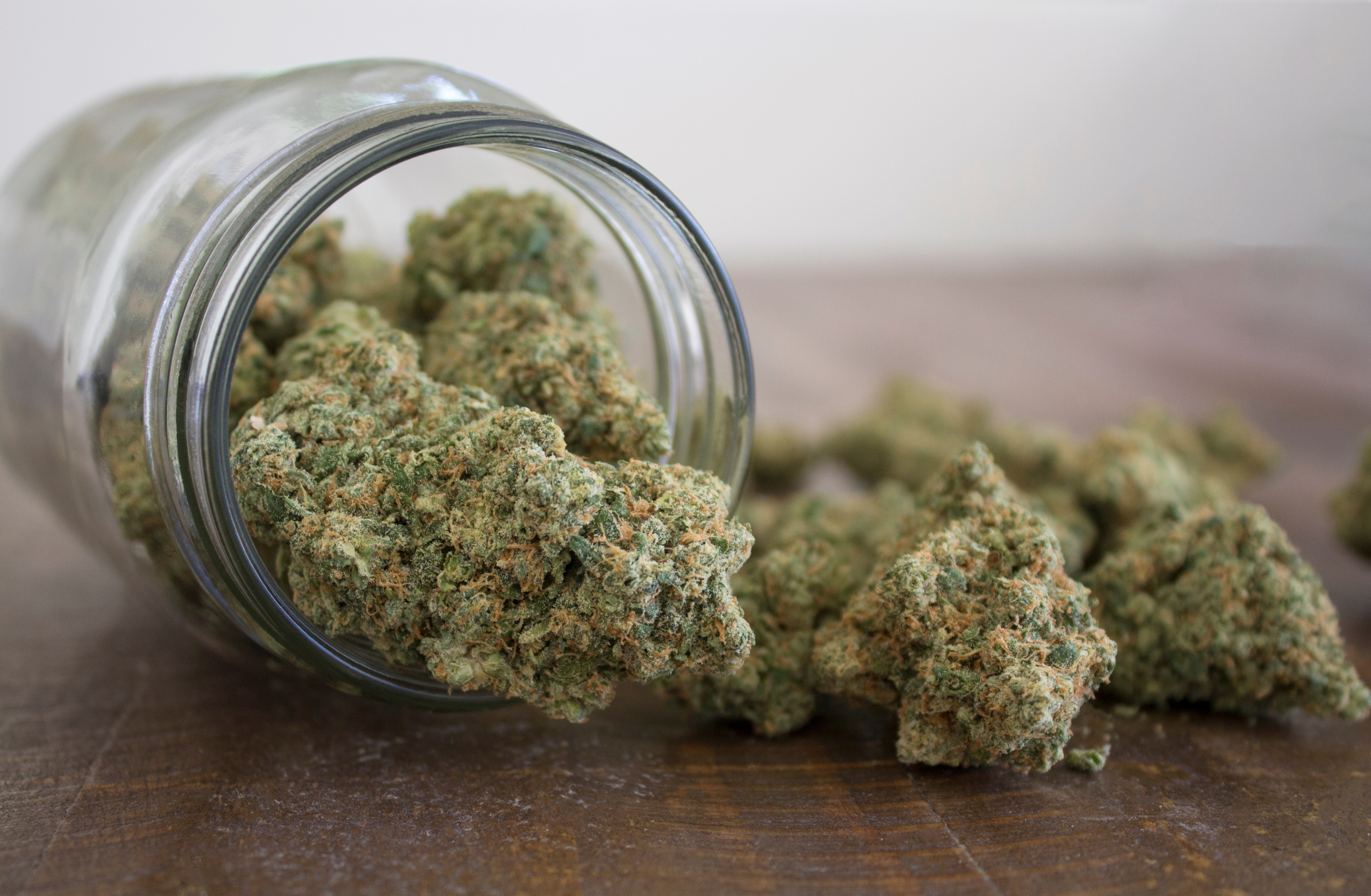Introduction
The Caboose marijuana strain, also known simply as “Caboose,” is an indica-dominant hybrid with a rich history and a potent profile. Its roots can be traced back to the crossbreeding of two iconic strains: Trainwreck and Salmon Creek Big Bud. The result is a strain that has gained popularity for its relaxing and euphoric effects, making it a favorite among cannabis enthusiasts seeking relief from stress, anxiety, and pain.
Origins and Genetics
Caboose is a product of careful breeding and selection. It was first developed by TGA Subcool Seeds, a well-known cannabis seed company founded by Subcool and MzJill. The breeders aimed to create a strain that combined the best attributes of its parent strains, Trainwreck and Salmon Creek Big Bud.
- Trainwreck: This sativa-dominant strain is famous for its energizing and uplifting effects. Its lineage includes Mexican, Thai, and Afghani varieties, making it a diverse and potent strain.
- Salmon Creek Big Bud: A mostly indica strain, Salmon Creek Big Bud, contributes its relaxing and calming qualities to the Caboose lineage. It is a variant of the classic Big Bud strain, renowned for its heavy yields and high resin production.
Appearance and Aroma
Caboose buds often have a dense and compact structure, typical of indica-leaning strains. The flowers showcase a vibrant combination of dark green and purple hues, with fiery orange pistils woven throughout. The buds are generously coated in sparkling trichomes, giving them a frosty and resinous appearance.
As for its aroma, Caboose delights the senses with a blend of sweet and earthy scents. Hints of citrus, pine, and spice can also be detected in the strain’s fragrance. When properly cured, the Caboose strain releases an inviting and robust bouquet that foretells the powerful effects to come.
Potency and Cannabinoid Profile
Caboose has gained a reputation for its high potency, thanks to its impressive cannabinoid profile. While THC levels can vary depending on the grower’s techniques and the strain’s phenotype, Caboose typically boasts THC levels between 18% to 24%, making it a strong strain that should be approached with caution, especially by novice users.
In addition to THC, Caboose contains a variety of other cannabinoids and terpenes that contribute to its overall effects. Some common terpenes found in Caboose include myrcene, limonene, and caryophyllene, which play a significant role in shaping the strain’s aroma and potential therapeutic benefits.
Effects and Benefits
The Caboose marijuana strain is valued for its potent effects that lean heavily toward the indica side of the spectrum. Upon consumption, users often experience a wave of relaxation and tranquility that gently washes away stress and tension. The high THC content leads to a powerful body buzz, which can be both sedative and euphoric.
- Physical Relaxation: Caboose is an ideal strain for those seeking relief from physical discomfort or chronic pain. Its relaxing effects may soothe tense muscles, reduce inflammation, and ease the body into a state of relaxation.
- Mood Enhancement: Despite its indica-dominant nature, Caboose can produce a sense of happiness and euphoria. It may uplift mood and temporarily alleviate symptoms of depression and anxiety.
- Sleep Aid: Due to its sedative properties, Caboose is often recommended for individuals struggling with insomnia or sleep-related issues. It can help users unwind and prepare for a restful night’s sleep.
- Appetite Stimulation: Another common effect of Caboose is increased appetite, often referred to as “the munchies.” This can be beneficial for individuals experiencing appetite loss due to medical conditions or treatments.
Medical Uses
The Caboose strain’s potent effects have made it a popular choice for medicinal users seeking relief from various ailments. Some of the medical conditions for which Caboose is commonly used include:
- Chronic Pain: Caboose’s analgesic properties can offer respite from chronic pain conditions such as arthritis, fibromyalgia, and migraines.
- Anxiety and Stress: The strain’s calming effects can be beneficial for individuals struggling with anxiety disorders, stress, and tension.
- Insomnia and Sleep Disorders: Caboose’s sedative qualities make it an attractive option for those dealing with sleep disturbances and insomnia.
- Appetite Stimulation: Patients undergoing chemotherapy or suffering from appetite loss due to medical conditions may find relief from Caboose’s ability to stimulate hunger.
Growing Caboose Strain
If you are interested in cultivating the Caboose marijuana strain, it is essential to understand its growing requirements. Caboose can be grown both indoors and outdoors, but it tends to thrive best in a controlled indoor environment where factors like light, temperature, and humidity can be easily managed.
- Indoor Cultivation: When growing Caboose indoors, using a hydroponic system or soil in pots is recommended. Provide the plants with adequate lighting, such as high-quality LED grow lights, and maintain the appropriate temperature and humidity levels. The flowering period typically lasts around 8 to 9 weeks, and the yields can be rewarding if given the right care.
- Outdoor Cultivation: Caboose can also be grown outdoors, especially in a sunny and warm climate. However, it is essential to ensure that the plants are protected from harsh weather conditions and pests. Outdoor harvesting usually occurs in late September or early October.
Potential Side Effects
- While Caboose can offer numerous benefits, it is essential to be aware of potential side effects. The most common adverse reactions associated with this strain are:
- Dry Mouth: Like with many cannabis strains, Caboose can cause dry mouth or “cottonmouth.” Staying well-hydrated can help alleviate this discomfort.
- Dry Eyes: Some users may experience dry and irritated eyes. Using over-the-counter eye drops can help alleviate this symptom.
- Dizziness: Due to its potency, Caboose can induce dizziness or lightheadedness, especially in higher doses or inexperienced users. Moderation is key.
- Anxiety and Paranoia: In rare cases, some users may experience heightened anxiety or paranoia, particularly if consuming too much or if predisposed to these conditions.
Legality and Availability
The legal status of the Caboose marijuana strain varies depending on the region and country. As of my last update in September 2021, some places may permit recreational or medicinal cannabis use, while others still prohibit it entirely. Always consult local laws and regulations before purchasing or cultivating Caboose or any other cannabis strain.
Availability can also vary from region to region. Caboose may be more prevalent in areas with a robust cannabis culture or in states or countries with more relaxed cannabis laws. Online seed banks may also offer Caboose seeds for purchase, allowing growers to cultivate their own plants.
Conclusion
The Caboose marijuana strain is a noteworthy indica-dominant hybrid that offers a potent combination of physical relaxation and mood enhancement. Its origins from the crossbreeding of Trainwreck and Salmon Creek Big Bud have resulted in a strain cherished by both recreational and medicinal cannabis users.
When consuming Caboose, always start with a low dose, especially if you are new to cannabis or have a low tolerance. Like with any cannabis strain, individual reactions can vary, so it’s essential to understand your limits and consume responsibly.
As always, if you are using cannabis for medicinal purposes or have any health concerns, consult with a healthcare professional before incorporating Caboose or any cannabis product into your wellness routine. And remember, laws regarding cannabis use can change, so make sure to stay informed about the legal status of cannabis in your region.
- Discovering the Best CBD Vape Oils: My Flavorful Journey with JustCBD UK - August 23, 2024
- Gummy Adventures: Exploring the Magical World of Mushroom Gummies! - May 21, 2024
- Caboose Marijuana Strain - September 23, 2023

